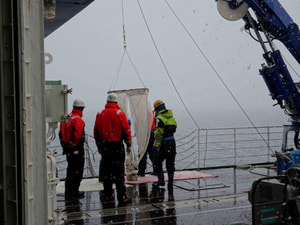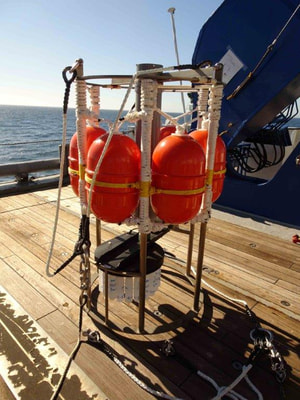Four ArCS scientists from Faculty of Fisheries Sciences at Hokkaido University are participating in MIRAI Arctic cruise 2016 from 22nd August to 5th October. Our research objective is to examine the influence of Anadyr water, the high-productive zone in the north Bering Sea, to marine ecosystem in the Pacific Arctic.
Many types of observation/sampling have been conducted on board even on the snowy day. We use various tools during the observation/sampling. One of the mooring observations uses a ‘SEDIMENT TRAP’, which will be deployed and kept in the water for one year. This mooring observation allows the scientists to collect time-series data of the site. In simple term, ‘SEDIMENT TRAP’ is a ‘TRASH BOX’ in the ocean. It is designed to collect sinking particles from the surface water. After one year, accumulated ‘TRASH’ will be a stack of information to understand the biogeochemical cycles within the ecosystem. As such, it is more of a ‘WEALTH’ rather than a trash, as it holds key information in understanding the governing processes in the marine ecosystem.
We have carefully deployed them in the Arctic waters. We are looking forward to have a successful sediment trap retrieval next year!
Makoto Sampei(Hokkaido University / A member of Theme 6)






